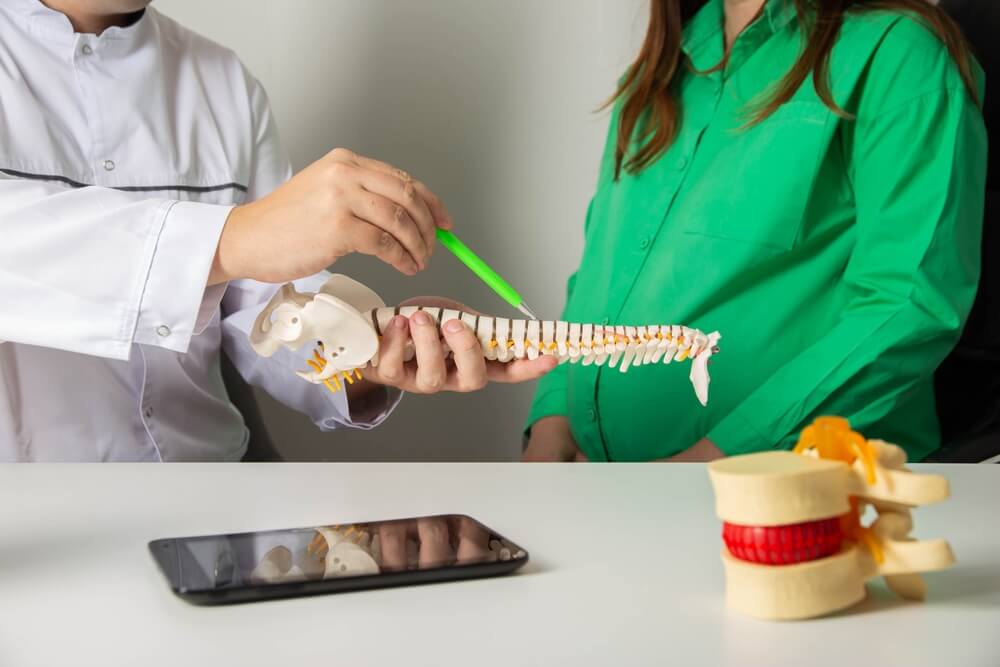Pregnancy is a miraculous and transformative journey for women, marked by various physical and hormonal changes. While the anticipation of welcoming a new life brings immense joy, it can also be accompanied by discomforts, one of which is pregnancy sciatica. This condition, characterized by pain radiating along the sciatic nerve, can affect expectant mothers. In this article, let us talk about intricacies of sciatica during pregnancy, exploring its causes and providing valuable insights into how to alleviate this common discomfort.
Patients rely a lot on professionals who will offer them support and guidance in their time of need, and medical facilities such as University Park OBYGN are the perfect space to visit and get recommendations and valuable advice. Medical teams in such clinics are there to offer premium patient care and support, so patients feel welcomed and supported on their path to recovery.
The Sciatic Nerve and Its Importance

Before delving into the specific factors leading to sciatica during pregnancy, understanding the role and significance of the sciatic nerve is paramount. The sciatic nerve is the largest nerve in the human body, originating from the lower lumbar and sacral spine. It extends down the back of each leg, branching out into smaller nerves that control various muscles and transmit sensory information.
This vital nerve serves a multifaceted purpose, facilitating communication between the brain and the lower extremities. Motor fibers within the sciatic nerve control the muscles of the thigh, leg, and foot, enabling essential movements like walking and maintaining balance. Simultaneously, sensory fibers transmit information back to the brain, allowing us to perceive sensations such as touch, temperature, and pain.
The sciatic nerve’s extensive reach and involvement in fundamental motor and sensory functions make it indispensable for daily activities. However, this very prominence also renders it susceptible to pressure and irritation, especially during pregnancy.
Understanding the intricacies of the sciatic nerve’s anatomy and function provides valuable insights into the challenges faced during pregnancy. It highlights the importance of maintaining the nerve’s optimal health and minimizing factors that could lead to discomfort.
Pregnancy Sciatica: A Common Discomfort
Pregnancy sciatica, also known as sciatic nerve pain during pregnancy, is a prevalent issue that many expectant mothers face. The discomfort arises due to increased pressure on the sciatic nerve, leading to pain that can range from mild to severe. Understanding the various causes of sciatica during pregnancy is essential for effectively managing and reducing the associated discomfort.
As the uterus expands to accommodate the growing fetus, it may exert direct pressure on the sciatic nerve or its adjacent nerve roots. Additionally, hormonal changes, such as elevated levels of relaxin, can impact the flexibility of muscles and ligaments, potentially contributing to compression of the sciatic nerve. These factors collectively create an environment where pregnant women are more prone to experiencing sciatic nerve pain.
What Causes Sciatica During Pregnancy?
As mentioned, there are different factors which influence the health of pregnant women when it comes to the nervous system. Below we are sharing some of the most common answers to the question of what causes sciatica during pregnancy.
- Weight Gain and Altered Posture
Among the primary contributors to sciatica during pregnancy are the natural changes in a woman’s body, particularly the inevitable weight gain associated with carrying a developing baby. As pregnancy progresses, the body undergoes a series of transformations to nurture and support the growing fetus. The additional weight, concentrated in the abdominal area, can lead to an altered center of gravity and place increased stress on the spine.
This shift in the body’s weight distribution can have a cascading effect on posture. As the belly expands, the curvature of the spine may change, causing the pelvis to tilt forward. This alteration in posture not only impacts the alignment of the spine but also increases the pressure on the sciatic nerve, which runs from the lower back down through the buttocks and legs.
- Hormonal Changes
As mentioned previously, hormones play a crucial role during pregnancy, and the body undergoes significant hormonal fluctuations to support fetal development. The hormone relaxin, responsible for relaxing the uterine muscles, can also affect other muscles in the body, potentially leading to an increased risk of sciatic nerve compression. This hormonal influence can contribute to the development of sciatica during pregnancy.
- Increased Fluid Retention
Pregnancy often leads to increased fluid retention, causing swelling in various parts of the body, including the lower extremities. Swelling and fluid retention can exert pressure on the sciatic nerve, exacerbating pain and discomfort. Managing fluid retention through proper hydration and elevation of the legs can be beneficial in reducing sciatic nerve pain.
- Lumbar Spine Misalignment
As the body undergoes changes to accommodate the growing baby, the lumbar spine may experience misalignment. This misalignment can directly impact the sciatic nerve, leading to pain and discomfort. Gentle exercises and proper posture can contribute to maintaining spinal alignment and reducing the risk of sciatica during pregnancy.
How to Reduce Sciatic Nerve Pain During Pregnancy?

Many patients often ask themselves how to reduce sciatic nerve pain during pregnancy, so today we decided to share with you some of the most common ways of pain reduction in people with this particular diagnosis:
- Prenatal Exercises: Engaging in regular, low-impact exercises tailored for pregnant women can help strengthen the core and lower back muscles. Prenatal yoga and swimming are excellent choices, promoting flexibility and reducing the likelihood of sciatic nerve compression.
- Proper Posture: Maintaining good posture is essential during pregnancy to alleviate pressure on the sciatic nerve. Using supportive cushions, sitting up straight, and avoiding prolonged periods of standing or sitting can contribute to better posture and reduced sciatic nerve pain.
- Heat and Cold Therapy: Applying heat or cold to the affected area can provide relief from sciatic nerve pain. A warm compress or a cold pack can be used to reduce inflammation and soothe the discomfort. However, it is crucial to consult with a healthcare professional before using any therapy during pregnancy.
- Prenatal Massages: Prenatal massages performed by certified therapists can help alleviate muscle tension and promote relaxation. Gentle kneading and stretching can target areas affected by sciatic nerve pain, offering relief to expectant mothers.
Call Us!
In conclusion, sciatica during pregnancy is a common discomfort that can be attributed to a combination of factors, including weight gain, hormonal changes, fluid retention, and spinal misalignment. Understanding the causes of pregnancy sciatica is essential for expectant mothers to effectively manage and reduce the associated pain.
By incorporating prenatal exercises, maintaining proper posture, and exploring safe therapies such as heat and cold applications and prenatal massages, women can navigate the challenges of sciatic nerve pain during pregnancy with greater comfort and ease. As always, it is crucial to consult with healthcare professionals for personalized guidance and recommendations tailored to individual needs, so call our center today and let us help you!


